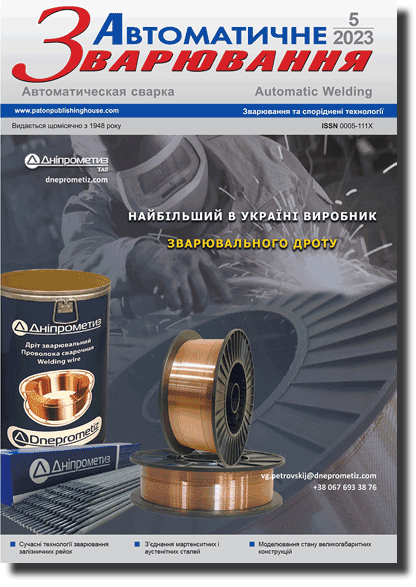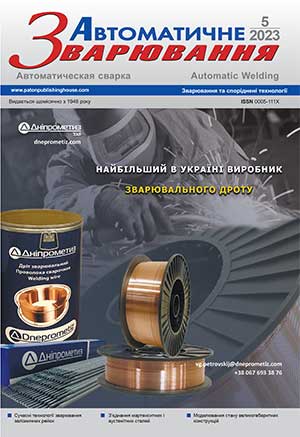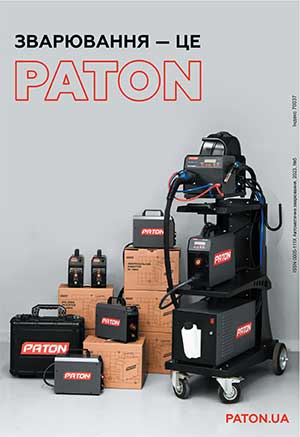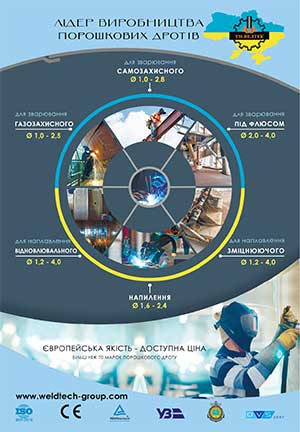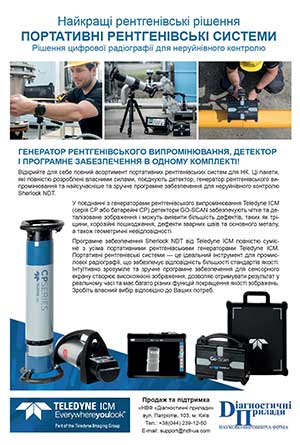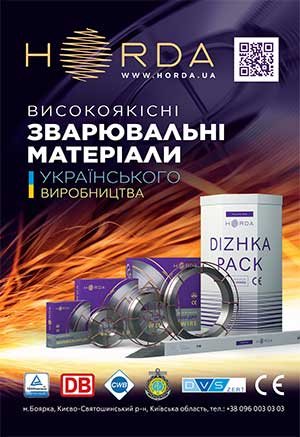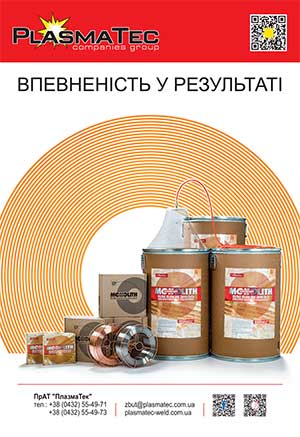| 2023 №05 (03) |
DOI of Article 10.37434/as2023.05.04 |
2023 №05 (05) |
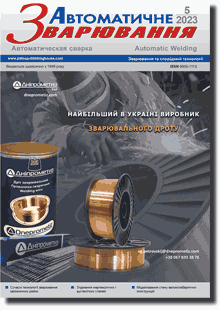
"Avtomatychne Zvaryuvannya" (Automatic Welding), #5, 2023, pp. 37-43
A numerical method of multiscale modeling of the stress-strain state of large-sized sctructures in site welding
O.S. Milenin, O.A. Velikoivanenko, G.P. Rozynka, N.I. Pivtorak
E.O. Paton Electric Welding Institute of the NAS of Ukraine. 11 Kazymyr Malevych Str., 03150, Kyiv, Ukraine. E-mail: office@paton.kiev.uaA multiscale procedure was proposed for modeling the kinetics of stress-strain state of large-sized structures during site welding. This procedure is based on finite-element solution of nonstationary thermoplasticity problems, characteristic for fusion welding technologies, at the mesoscale level with fine spatial breakdown of the region and with subsequent transfer of a certain amount of calculation data into a macroscopic model of a large-scale structure. Algorithms of the respective averaging of the properties and stress-strain state parameters are proposed for this purpose, which allows performing analysis of large-sized structures during welding without the need to involve significant computing power. A characteristic example of site welding of a cylindrical structure of a large diameter is used to show the applicability of the developed approach for prediction of spatial distribution of stresses and strains. Here, the most effective method is calculation of the stress fields, where a much greater sparseness of the spatial breakdown can be achieved, while calculation of the strained state is much more sensitive to finite element size. 14 Ref., 3 Fig.
Keywords: large-sized structures, welding, stress-strain state, mathematical modeling, multiscale method, resource intensity of calculation
Received: 03.04.2023
References
1. Deng, D., Murakawa, H., Liang, W. (2007) Numerical simulation of welding distortion in large structures. Comput. Methods Appl. Mech. Engrg., 196, 4613-4627. https://doi.org/10.1016/j.cma.2007.05.0232. Park, J.-U., An, G., Woo, W. et al. (2014) Residual stress measurement in an extra thick multi-pass weld using initial stress integrated inherent strain method. Marine Structures, 39, 424-437. https://doi.org/10.1016/j.marstruc.2014.10.002
3. Zhang, L., Michaleris, P., Marugabandhu, P. (2007) Evaluation of Applied Plastic Strain Methods for Welding Distortion Prediction. Journal of Manufacturing Science and Engineering, 129, 1000-1010. https://doi.org/10.1115/1.2716740
4. Liu, R.-F., Wang, J.-C. (2022) Application of finite element method to effect of weld overlay residual stress on probability of piping failure. International Journal of Pressure Vessels and Piping, 200, 104812. https://doi.org/10.1016/j.ijpvp.2022.104812
5. Li, S., Coraddu, A., Oneto, L. (2022) Computationally aware estimation of ultimate strength reduction of stiffened panels caused by welding residual stress: From finite element to data-driven methods. Engineering Structures, 264, 114423. https://doi.org/10.1016/j.engstruct.2022.114423
6. Bayraktar, C., Demir, E. (2022) A thermomechanical finite element model and its comparison to inherent strain method for powder-bed fusion process. Additive Manufacturing, 54, 102708. https://doi.org/10.1016/j.addma.2022.102708
7. Takezawa, A., To, A.C., Chen, Q. et al. (2020) Sensitivity analysis and lattice density optimization for sequential inherent strain method used in additive manufacturing process. Computer Methods in Applied Mechanics and Engineering, 370, 113231. https://doi.org/10.1016/j.cma.2020.113231
8. Liangfeng, L., Cheng, L., Jie, S., Yansong, Z. (2022) Numerical prediction of welding deformation in ship block subassemblies via the inhomogeneous inherent strain method. Journal of Manufacturing Processes, 80, 860-873. https://doi.org/10.1016/j.jmapro.2022.06.044
9. Honaryar, A., Iranmanesh, M., Liu, P., Honaryar, A. (2020) Numerical and experimental investigations of outside corner joints welding deformation of an aluminum autonomous catamaran vehicle by inherent strain/deformation FE analysis. Ocean Engineering, 200, 106976. https://doi.org/10.1016/j.oceaneng.2020.106976
10. Makhnenko, O.V., Muzhichenko, A.F., Seyffarth, P. (2009) Application of mathematical modelling in thermal straightening of shipbuilding panels. Paton Welding J., 1, 6-11.
11. Makhnenko, V.I., Milenin, A.S., Semyonov, A.P. (2007) Mathematical modelling of thermal-deformation processes in braze-welding of butt joints of the titanium-aluminium type. Ibid, 11, 5-9.
12. Makhnenko, V.I., Pochinok, V.E. (2006) Strength Calculation of Welded Joints with Crack-Like Imperfections. E.O. Paton Electric Welding Institute, NASU.
13. Makhnenko, V.I. (2006) Safe service life of welded joints and assemblies of modern structures. Kyiv, Naukova Dumka [in Russian].
14. Velikoivanenko, E., Milenin, A., Popov, A. et al. (2019) Methods of numerical forecasting of the working performance of welded structures on computers of hybrid architecture. Cybernetics and Systems Analysis, 55, 1, 117-127. https://doi.org/10.1007/s10559-019-00117-8
Advertising in this issue:
The cost of subscription/purchase order journals or individual articles
| Journal/Currency | Annual Set | 1 issue printed |
1 issue |
one article |
| TPWJ/USD | 384 $ | 32 $ | 26 $ | 13 $ |
| TPWJ/EUR | 348 € | 29 € | 24 € | 12 € |
| TPWJ/UAH | 7200 UAH | 600 UAH | 600 UAH | 280 UAH |
| AS/UAH | 1800 UAH | 300 UAH | 300 UAH | 150 UAH |
| AS/USD | 192 $ | 32 $ | 26 $ | 13 $ |
| AS/EUR | 180 € | 30 € | 25 € | 12 € |
| SEM/UAH | 1200 UAH | 300 UAH | 300 UAH | 150 UAH |
| SEM/USD | 128 $ | 32 $ | 26 $ | 13 $ |
| SEM/EUR | 120 € | 30 € | 25 € | 12 € |
| TDNK/UAH | 1200 UAH | 300 UAH | 300 UAH | 150 UAH |
| TDNK/USD | 128 $ | 32 $ | 26 $ | 13 $ |
| TDNK/EUR | 120 € | 30 € | 25 € | 15 € |
AS = «Automatic Welding» - 6 issues per year;
TPWJ = «PATON WELDING JOURNAL» - 12 issues per year;
SEM = «Electrometallurgy Today» - 4 issues per year;
TDNK = «Technical Diagnostics and Non-Destructive Testing» - 4 issues per year.





